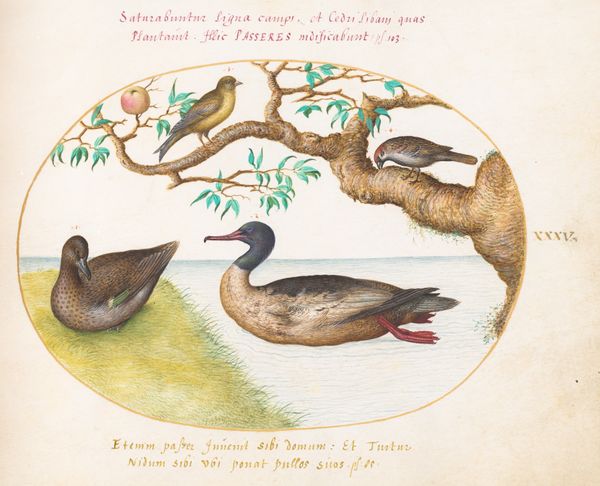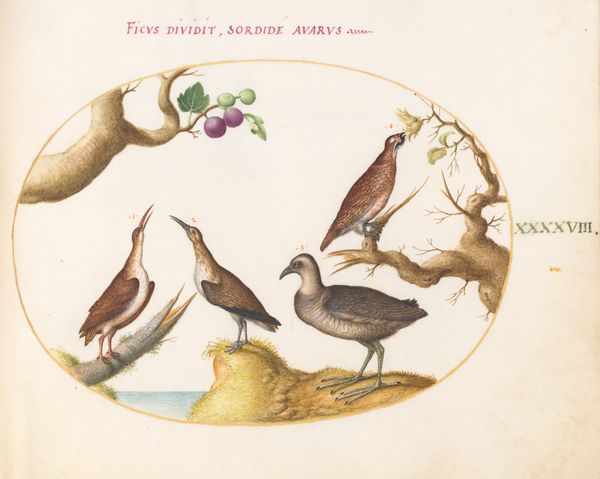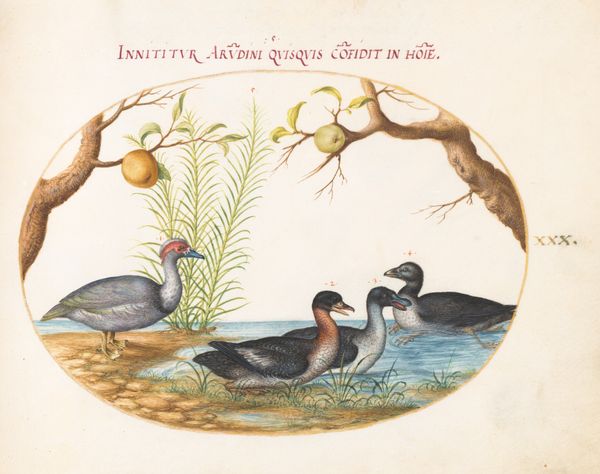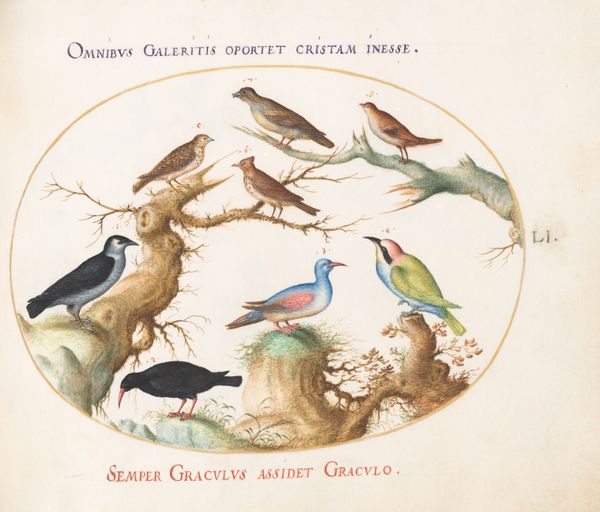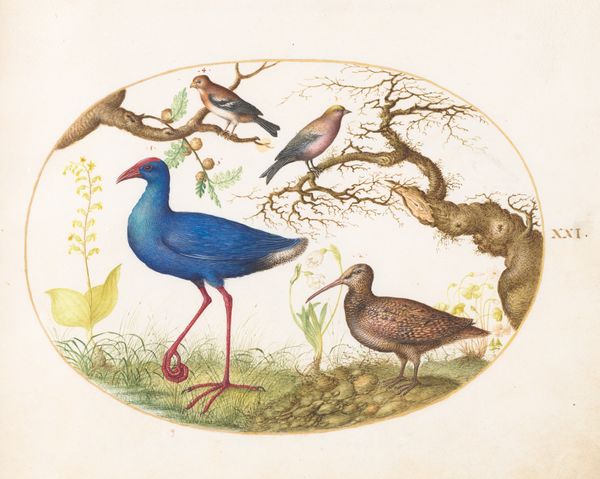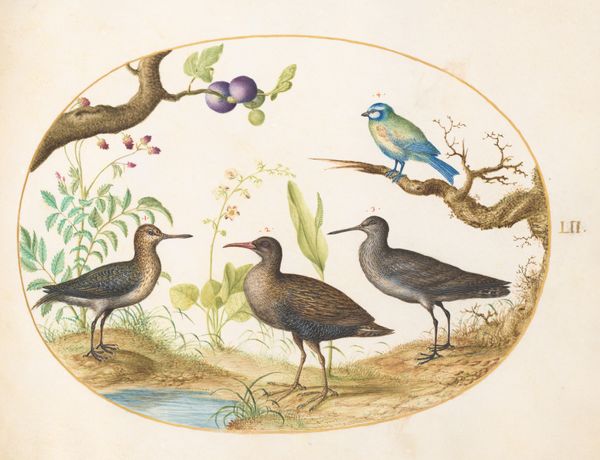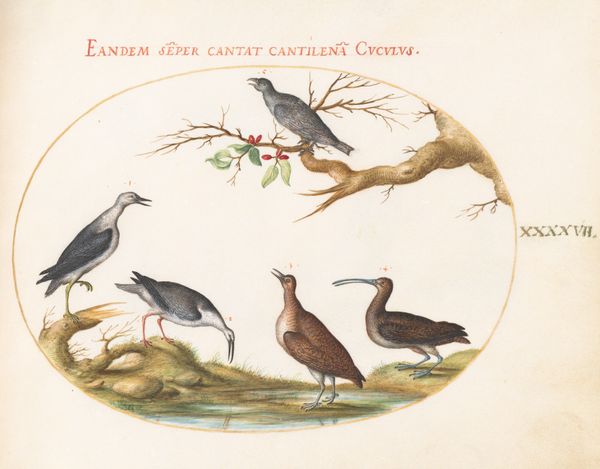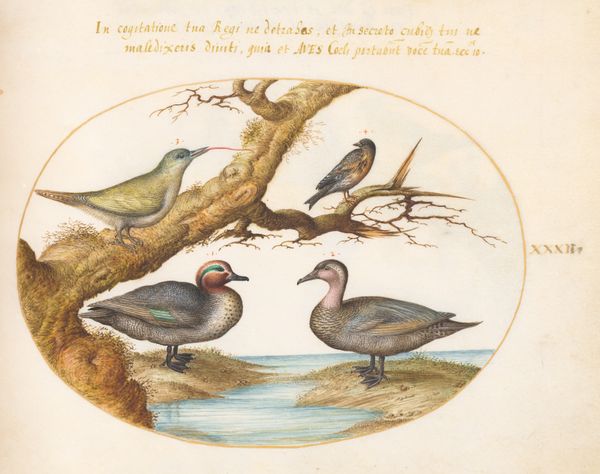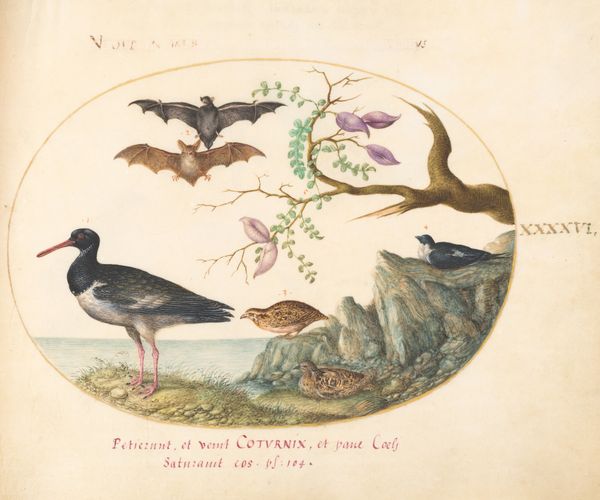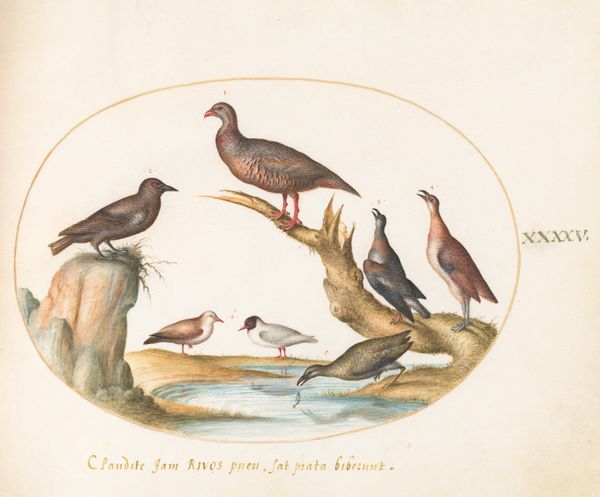
Plate 24: Two Swans, a Kingfisher, and a Bullfinch c. 1575 - 1580
0:00
0:00
drawing, coloured-pencil
#
drawing
#
coloured-pencil
#
landscape
#
mannerism
#
figuration
#
11_renaissance
#
coloured pencil
#
miniature
Dimensions: page size (approximate): 14.3 x 18.4 cm (5 5/8 x 7 1/4 in.)
Copyright: National Gallery of Art: CC0 1.0
Editor: So, this is *Plate 24: Two Swans, a Kingfisher, and a Bullfinch* by Joris Hoefnagel, created sometime between 1575 and 1580 using colored pencils. It’s…charming, almost like an illustration from a bestiary. What stands out to you in this piece? Curator: What immediately grabs me is the context. Hoefnagel was court artist to Emperor Rudolf II in Prague, a hub for artistic patronage but also intellectual curiosity at a time when scientific observation was burgeoning. How does the precision in rendering each bird species— almost like a scientific study— sit with the Mannerist style to you? Editor: It's interesting you mention that. It feels like a conflict, that push and pull between observation and…stylization. It's not a photograph; there’s a certain elegance imposed, especially on the swans. Curator: Exactly. These “miniatures” circulated in elite circles. These images weren't just art objects; they reflected Rudolf's ambitions for gathering all knowledge. Think about it, natural science intertwined with imperial prestige! That text at the top – "Then swans will sing when jackdaws are silent" - Do you see this in relation to contemporary emblems? Editor: Now that you mention it, that phrase suggests something symbolic... beyond simple documentation. It connects to the traditions of knowledge, status and visual display, right? Curator: Precisely. The image isn't just representational but participates in an intricate symbolic game amongst the elite. Consider how access to this knowledge solidified the Emperor's power. Editor: That’s a very interesting way to think about this work, less as a pretty picture and more as a kind of power statement. Thanks! Curator: Absolutely. It is crucial to situate artworks within broader social and political frameworks. Understanding who created, who consumed, and for what purposes truly unlocks these images.
Comments
No comments
Be the first to comment and join the conversation on the ultimate creative platform.
